by Deep Green Resistance News Service | Apr 25, 2016 | Indigenous Autonomy
FUNAI DECISION PROTECTS MUNDURUKU LANDS FROM TAPAJÓS HYDRO DAM DESTRUCTION
By Manuela Picq / Intercontinental Cry
In a landmark victory for indigenous land rights in Brazil, the National Foundation for the Indian (FUNAI) has decided to proceed with the official demarcation and protection of the Munduruku Peoples 700-square-mile ancestral territory on the Tapajós River, in the Brazilian Amazon.
The land demarcation is a major political win for the Munduruku Peoples. Under existing Brazil legislation the construction of hydroelectric plants that flood demarcated Indigenous lands is expressly prohibited. This means the Munduruku’s historical territory must now be spared from the same dam-driven destruction witnessed in the Xingú region since construction work began on the controversial Belo Monte dam project. The recent move by FUNAI also sets a new legal milestone for Indigenous Peoples demanding land demarcation as a way to protect their territories.
THE DEMARCATION OF MUNDURUKU LANDS
FUNAI, the Brazilian acronym for Fundação Nacional do Índio, announced the decision to demarcate the Munduruku’s territory on the Day of Indigenous Peoples, April 19, 2016.
Acting in its official capacity as the government body responsible for establishing and carrying out policies relating to Indigenous Peoples, the institution published documents identifying and recognizing the Munduruku’s ancestral rights to Sawré Maybu, a territory of 178 thousand hectares located between Itaituba and Trairão, in the state of Pará.
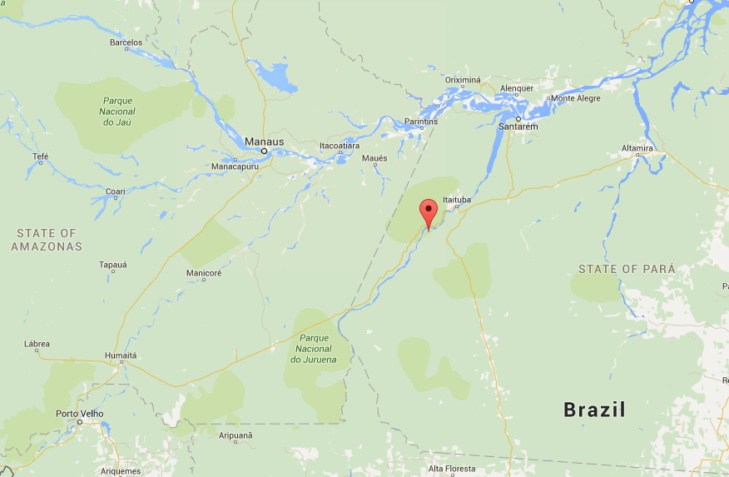
Approximate location of Sawré Muybu demarcation area. Map by Google Maps
FUNAI’s decision to demarcate ends a long-standing and heated political battle between Brazil’s energy sector and Indigenous Peoples in the Tapajós. For at least the last five years, the energy sector has insisted that no Indigenous Peoples have ancestral ties to the region. FUNAI’s announcement brings an end to that argument, confirming that the Munduruku have historical ties to the dam-threatened area.
The final demarcation still depends on a presidential decree that cannot be published for 90 days – a normative timeframe to allow questions and debate to take place – nevertheless, the Munduruku territory is now all but secured from the consequences of the São Luiz do Tapajós dam.
Munduruku cacique (leader) Jairo Saw considers FUNAI’s decision to be an historical victory that indicates the articulation of Indigenous struggles in the Tapajós region.
FUNAI’s President João Pedro Gonçalves da Costa, complimented the cacique’s sentiment, stating that the recognition is unavoidable. “It is impossible and unacceptable to deny the tradition and historical presence of (Munduruku) peoples in the Tapajós,” he said.
THE HYDRO-PROJECT SÃO LUIZ DO TAPAJÓS
The São Luiz do Tapajós dam carried an estimated cost of BRL$32.52 billion (USD$9.12 billion) and would have generated on average 4.012 megawatts per year, about the same as the Belo Monte Dam, also in the state of Pará. On its own, the São Luiz do Tapajós dam would provide almost half the energy of all other hydroelectric plants planned in Brazil for the next ten years, supporting over 20 million homes.
Yet its environmental and human cost was brutal. The São Luiz do Tapajós dam would not only take the Munduruku’s ancestral lands. The total flood area would encompass 729 square kilometers of pristine Amazon rainforest. To put things in perspective, the Belo Monte Dam flood is set to flood 503 square kilometers.
Like the Belo Monte dam, the São Luiz do Tapajós dam has been constantly entangled in judicial irregularities and corruption scandals. In 2014, Brazil’s government announced the dam without an environmental license, a fatal move that forced the government to cancel planning a couple days later. When a judge ordered FUNAI to expedite land demarcation in the affected area, the Federal Government in Brasilia overturned the ruling claiming there was no need for demarcation.
The government stakes were high, placing considerable pressure on then-director of FUNAI Maria Augusta Assirati to uphold the process of land demarcation. She admitted in a meeting with Munduruku authorities that she was expected to secure the hydro dam’s interests.
Just days after that meeting she resigned from her post.
FUNAI held back the land demarcation for years. Jairo Saw, cacique of Sawré Maybu, said that when they realized that they could not count on FUNAI the community decided to start the process of demarcation on its own, autonomous from the government.
In 2016, the dam project was placed on the market once again; the government repeating its past failure to carry out a free, prior and informed consultation process with the Munduruku as required by the Convention 169 of the International Labor Organization (ILO 169).
THE SUPPORT OF BROAD COALITIONS
The absence of land demarcation resulted in various forms of abuse and the mobilization of the UN Special Rapporteur on Indigenous Issues to the region. In March 2016, Victoria Tauli-Corpuz visited Altamira to hear complaints and testimonies about the planning of the hydro-plant. She met with 13 representatives from various communities from the Tapajós river valley: munduruku, arara vermelha, apiaká, arapiun, borari, jaraqui, kumaruara, kayabi, tapajós, tapuia, tupaiú, maytapu, cara preta e tupinambá.
Indigenous Peoples denounced the disrespect of the patrimony through the state of Pará. In addition to hydro dams, they explained at the time they were also victim to the invasion of loggers, mining, agri-business, and even carbon credit projects. The violence on their lands was tacitly permitted by the silence of judicial institutions in Brasilia.
During her visit, Tauli-Corpuz foresaw that it was possible to paralyze the dam construction. She encouraged the Munduruku to continue their resistance. She also talked about her own experience resisting the construction of a dam in the 1970s-1980s in the Philippines. Their unity gave them strength, she later claimed, in a struggle that is not only for the Mundurku but for all Brazilians, for generations to come.
Solidarity ultimately led the way to success. Strong collaborations among communities from the Xingú and Tapajós regions played a crucial role in achieving the land demarcation.
Community leaders from the two regions recently met to celebrate a commitment of cooperation and mutual support. At their gathering, they sealed an agreement to gather all their force to prevent the consequences of the Belo Monte from being repeated in the Tapajós river basin.
In the recent past, the Munduruku also issued the Munduruku Consultation Protocol demanding their right to prior consultation in accordance with international law and Brazil’s constitution.
With the Munduruku and their allies standing at the ready, they now await the President’s decision to uphold the letter and the spirit of Brazilian law.
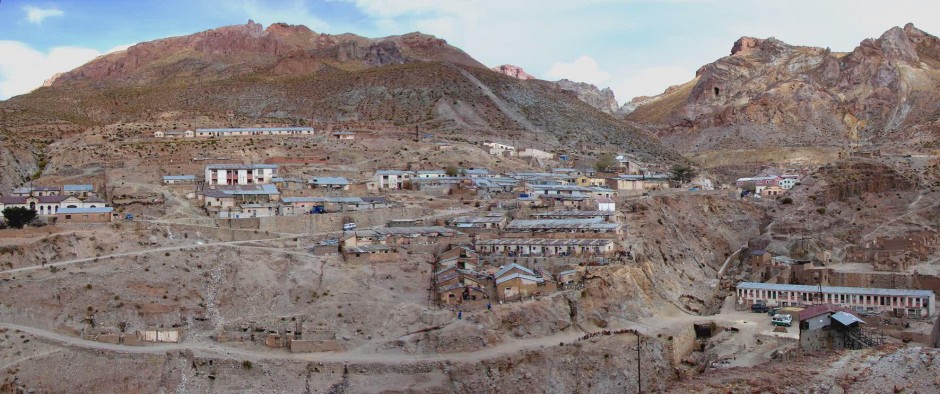
by DGR News Service | Apr 17, 2016 | Colonialism & Conquest, Human Supremacy, Prostitution
Featured image: Mining in Seite Suyos, Bolivia. (Credit: Wikimedia Commons user Mach Marco)
By Derrick Jensen / Deep Green Resistance
When living the dream means others will die
I want to tell you three stories of winning and losing, of selfishness and sacrifice, of this culture.
Story one. Last spring I gave a talk in a small farming community in northwestern Illinois. I drove there from my previous talk in Wisconsin, passing through prime agricultural territory, which is to say cleared and plowed and empty cornfield after cleared and plowed and empty cornfield. When I got to my destination, a delightful retired teacher took me to see the last remaining unplowed prairie in the county. It was more or less downtown, between a busy street and yet another field devoted to agriculture. As he led me across the slender tract, I couldn’t stop weeping at the sight of flowers who were once common and now barely hanging on, butterflies who were once common and now barely hanging on, a mother goose protecting her nest. My (human) host told me that even though this is the last six acres left—just six acres out of 360,000 in the county—the neighboring landowner refuses to stop applying insecticides and herbicides, which of course drift across the fenceline.
That evening, after he introduced me, I took the stage, sat down, and faced a roomful of members of this farming community. I thanked them for their hospitality, told them of my experiences of the previous twenty-four hours, then said, “I think the plow is the most destructive artifact humans have ever created. It destroys every living being on a piece of ground and converts that land to solely human use.”
The members of this farming community looked back at me. One gave a grim smile, then said, “Those plows paid for our houses.”
I nodded, smiled just as grimly, and responded, “That’s precisely the problem, isn’t it?”
Story two begins with me receiving an issue of my alumni magazine from the Colorado School of Mines, which featured an article titled “Hitting Paydirt.” The article tells stories of several “tremendously rewarding” discoveries. There’s a twenty-six-year-old CSM grad who discovered a “virgin deposit” of 2 million ounces of gold. Another grad discovered what became mines in environmentally ravaged Ireland; environmentally ravaged, war-torn, and rape-plagued Somalia; and environmentally ravaged, war-torn, rape-plagued, and slavery- and child-labor-infested Mauritania (the article, of course, only listed the countries, not their misfortunes, many of which are caused or exacerbated by resource extraction). But the story I want to focus on happened in Bolivia, where CSM grad Larry Buchanan, in the employ of a transnational mining corporation (with an address in the Cayman Islands for tax haven purposes, and having since that time gone through bankruptcy and changed its name, emerging as essentially the same company but without the debt), saw what seemed like a promising geological formation. He looked more closely, and found at the center of the deposit a village, complete with ancient stone church.
Buchanan describes it like this: “The silver deposit lay on the surface, mineralized ledges cropped out everywhere around and below a little indigenous village of rock, adobe and grass thatch, called San Cristobal. The cobblestone streets were paved with silver-bearing rock. The rock walls of the houses literally were laced with silver veins. You couldn’t take a step without touching silver. But somehow [sic] it had been overlooked [sic] by everyone [sic].”
He unintentionally answers his own question as to why these indigenous peoples had never put in an open pit mine: “The Quechua culture of southwestern Bolivia is one of multiple gods and spirits, one with a profound respect for the earth in general and curiously [sic], for rocks in particular. They believe rocks are their direct ancestors, living souls that speak, think, feel emotions, and have distinct personalities.”
Buchanan again: “We discovered nearly a half billion tonnes of those silver-plated ancestors of the Quechua. [Yes, he actually said that.] After a year of work, the engineers calculated it contained nearly a billion ounces of silver, enough ore to last seventeen years of intensive mining. The computer models proved it feasible: the profits would be more than enormous and the mine would become a money-machine. [Yes, he actually said that.] It was a company maker, a world-class discovery, a perfect setup.” The only thing in his way was “that poverty-stricken little village right on top of it. If we wanted to make a mine, San Cristobal had to go.”
But the village didn’t go down without a fight—between white people. Buchanan’s wife was against moving the village and forced Buchanan to sleep on the couch, only relenting when Buchanan agreed that they would move to the village for a while to bear witness to the destruction they were causing (or, to use his words, “the opportunities we were offering the people”). This strikes me as a classic example of the conservative/liberal one-two punch of oppression, with the conservative perceiving the oppression as good in itself, while the liberal bears witness to the oppression without doing much of anything to stop it. So Buchanan and his wife watched as people dug up bones from the village’s four-hundred-year-old cemetery to move to their new compound eleven kilometers away. Buchanan joined village elders as they crawled around the cemetery to beg forgiveness for disturbing the dead. He watched as bulldozers leveled the village in just four hours. It was all very difficult for him: “There were times I was literally brought to tears when I would contemplate what the people lost due to my discovery.”
What was once a living village where people resided with their ancestors in the walls, their gods all around them, is now a huge toxic hole in the ground. But it’s all good. Buchanan believes the people now live better lives in the compound; transnational corporations have made 70 billion dollars; and, best of all, Buchanan and his wife wrote a book about it all. “I came to learn life holds so much more of value than just a few billion dollars worth of silver,” he says. Having learned this valuable lesson, Buchanan moved on to other projects, and believes he has just recently discovered another billion-ounce deposit somewhere else.
Story three involves New Zealand tae kwon do athlete Logan Campbell, who funded his dream of reaching the Olympics through being a pimp. He made a lot of money providing women’s bodies for men to use. He even made a video to recruit women into working for him. The advertisement had lots of pretty pictures of women leaping for joy in fields, standing contemplatively on beaches, and sharing warm hugs with happy children. One female voice-over gushed, “When I was a little girl, I used to dream of a life of liberty.” Another asked, “Did you enjoy that? I sure did.” One said, “I’m living the dream.” And another said, “You deserve it.” The ad never did describe precisely what the “it” is that women deserve, but I think most of us would agree that most little girls don’t dream of economically coerced sexual relations with strangers not of their choosing, of years of post-traumatic stress disorder, of broken psyches and broken genitals and broken lives.
The point, really, is that Logan Campbell did get to live his dream. He went to the Olympics on the bodies of women, just like Buchanan’s “tremendously rewarding find” came at the expense of San Cristobal and its deities, and just as plows pay for houses at the expense of everyone else in the biological community. These are all dreams of fame, accomplishment, money, even what we consider necessities, like the way we feed ourselves and the way we financially accumulate. The problem is, all these dreams are someone else’s nightmare.
These stories are not merely what is wrong with this culture, they are the fundamental ethos of this culture: the fulfillment of personal, social, and cultural dreams at the expense of all others. No sane culture would in any way extol any of these stories. So long as these stories are seen as the fulfillment of dreams, where the subjugation of others is not seen as subjugating them but rather as helping them to “live the dream”; so long as this culture considers actions that lead to the destruction of ancient ways of life as “rewarding finds,” where your own murderous behavior is seen as “offering opportunities” for the victims; so long as we find it not only acceptable but right and just to convert the lives of others and the life-support system of the entire planet itself into fodder for us, there is little hope for life on this planet.
Originally published in the January/February 2013 issue of Orion
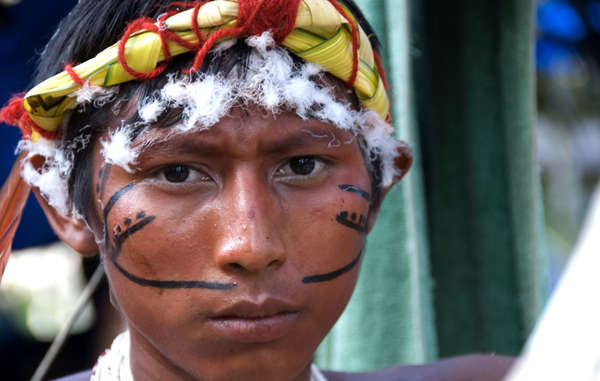
by Deep Green Resistance News Service | Mar 31, 2016 | Lobbying, Toxification
Featured Image: Gold miners have been invading Yanomami land for decades. © Fiona Watson/Survival International
Mercury poisoning is devastating tribal peoples across Amazonia, Survival International warned the U.N today.
In a letter to the U.N Special Rapporteur for Health, Survival International highlighted the failure of South American governments to address the contamination.
The unmonitored use of mercury, such as in illegal alluvial gold mining, often takes place on tribal peoples’ lands. Discriminatory attitudes towards tribal peoples mean that little action is taken to control it.
In Peru, 80% of a Nahua community have tested positive for high levels of mercury poisoning. 63% of those affected are children. Symptoms include anemia and renal failure, and one child has already died displaying symptoms consistent with mercury poisoning.
The Peruvian government has known about the mercury contamination since 2014 but has done little to identify the source. It is possible that other tribal peoples in the area have been affected, including uncontacted peoples.
In Brazil, new statistics reveal alarming rates of mercury poisoning amongst the Yanomami and Yekuana. 90% of Indians in one community are severely affected.

Without medical attention, mercury posioning can be lethal. Children and women of child-bearing age are most vulnerable
© Fiona Watson/Survival
Illegal gold miners operate on Yanomami land, polluting the rivers and forest with mercury. Uncontacted Yanomami are particularly in danger as many miners work near where they live.
Indigenous spokesman Reinaldo Rocha Yekuana said: “We are worried about the results of this research. This pollution affects plants, animals, and future generations.”
The Brazilian authorities have known about the mercury contamination since at least the 1980s, yet have failed to put a permanent stop to the illegal gold mining. Little has also been done to treat the affected Indians.
In Venezuela, several tribes including the Yekuana, Yanomami, Piaroa, Hoti and Pemon are also being devastated. 92% of Yekuana women in one region have levels of contamination far exceeding accepted limits.
Survival’s Director, Stephen Corry said: “These governments are sitting on a ticking time bomb. Every week that they fail to act, more and more indigenous peoples are being harmed. When mercury poisoning is identified, the source must be halted immediately and those affected must be treated. The effects will be catastrophic if indigenous peoples’ lands aren’t protected.”
by Deep Green Resistance News Service | Mar 13, 2016 | Toxification
Featured image: A huge proportion of the Nahua tribe have been affected by the poisoning, which causes anemia and acute kidney problems © Johan Wildhagen
By Survival International
Up to 80% of a recently-contacted tribe in Peru have been poisoned with mercury, raising serious concerns for the future of the tribe. One child has already died displaying symptoms consistent with mercury poisoning.
The source of the Nahua tribe’s poisoning remains a mystery, but experts suspect Peru’s massive Camisea gas project, which opened up the tribe’s land in the 1980s, may be to blame. The project has recently been expanded further into the Nahua’s territory, prompting fierce opposition from the tribe.
Rampant illegal gold mining in the region is another potential source of the mercury poisoning.
The Nahua, who live inside a reserve for isolated Indians in south-east Peru, have also been suffering from acute respiratory infections and other health problems since they were contacted.
Other indigenous communities in the area may also have been affected by mercury contamination, but tests have not been carried out. Some of these communities are uncontacted or extremely isolated. It is understood that the Peruvian Health and Environment Ministries have been aware of the problem since 2014.
AIDESEP, the main indigenous organization in Peru’s Amazon, is lobbying the government to carry out full health checks on the Nahua and other tribes in the area, and to conduct a proper investigation into the cause of the poisoning. A study was conducted by the Ministry of Health in spring 2015, but the results have yet to be published.
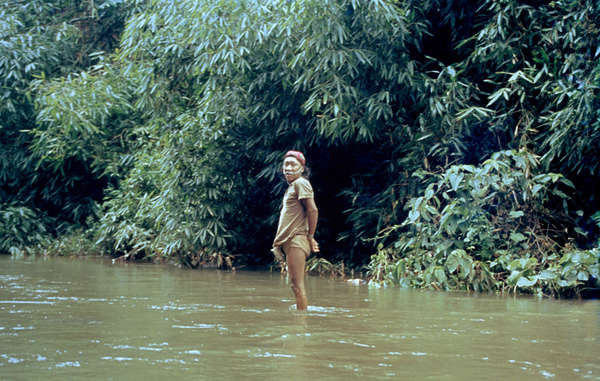
The Nahua were first contacted in the 1980s. Subsequent epidemics killed many members of the tribe
© Survival International
Nery Zapata, an indigenous leader, said: “Mercury contamination is extremely damaging to human health because its effects are irreversible. The health department must investigate this, and stop the contamination that is poisoning the indigenous population.”
Survival has also written to the Peruvian Ministries of Health and Culture urging them to publish the results of their study and put an end to the catastrophe.
Survival’s Director Stephen Corry said: “The Peruvian authorities have always been pretty indifferent to the problems facing their indigenous communities, and the total neglect they’ve shown in this case just proves it. Had this poisoning taken place in Lima, I don’t expect they would have been quite so casual in their response, or as slow to publish the results of their earlier findings. It’s nothing short of scandalous that they are not doing more to sort out this crisis. It’s also very telling that they are withholding information about it from the public.”
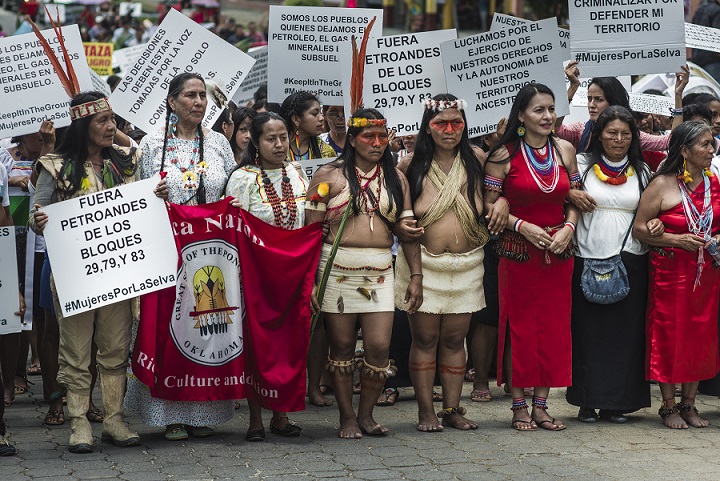
by Deep Green Resistance News Service | Mar 9, 2016 | Indigenous Autonomy, Protests & Symbolic Acts
By WECAN International
SAN FRANCISCO, Calif., March 9, 2016 – In recognition of International Women’s Day, Indigenous Amazonian women leaders of seven nationalities including: Andoa, Achuar, Kichwa, Shuar, Shiwiar, Sapara and Waorani nationalities and their international allies took action in Puyo, Ecuador, in a forum and march in defense of the Amazon, Mother Earth and for climate justice. Specifically, they came together to denounce a newly signed oil contract between the Ecuadorian government and Chinese oil corporation Andes Petroleum.
By plane, foot, canoe, and bus, some five hundred women mobilized from deep in their rainforest territories and nearby provinces marching through the streets of the Amazon jungle town of Puyo.
Chanting, “Defend the forest, don’t sell it!” and carrying signs reading “No more persecution against women defenders of Mother Earth,” the march culminated in a rally in which each nationality denounced the new oil threat and shared traditional songs and ceremonies. The women spoke of other methods for protecting and defending the Amazon and its vital living systems, making it known that the women of the Amazon are not just victims of environmental and cultural genocide, but rather are vital solution bearers.
In addition to highlighting the grave social and ecologic implications of this new contract and the Ecuadorian government’s plans to tender several more oil blocks in the pristine, roadless southern Amazon, the women and allies brought light to their struggles and the ongoing criminalization faced as they stand to protect and defend their territories and lifeways based upon living in harmony with the natural world. A tribute was held in honor of Berta Caceres, the Honduran indigenous environmental leader who was killed last week for her years of work defending rights and territories from privatization, plantations, and most recently, a mega dam project.
The women of the Amazon were also joined by Casey Camp Horinek, WECAN delegation member and Indigenous leader of the Ponca Nation of Oklahoma, who shared her traditional songs and stories of how her people have been impacted by fracking activity.
“Right now the oil company is trying to enter our territory. That is our homeland, this is where we have our chakras (gardens), where we feed our families. We are warriors, and we are not afraid. We will never negotiate,” explained Rosalia Ruiz, a Sapara leader from the community of Torimbo, which is inside the Block 83 oil concession.
“Although we are from three different provinces, we are one territory and one voice,” Alicia Cahuiya, Waorani leader declared.
As the march unfolded, the Ecuadorian government and Andes Petroleum held a meeting in the nearby town of Shell to organize an illegal entry into Sapara territory, knowing that key leaders would not be present. Outraged, a delegation of Sapara delivered a letter to the meeting, underscoring their peoples’ opposition to the oil project and governments tactics to divide the community. They successfully thwarted the government and company plans, and returned to the streets, victorious.
International allies including the Women’s Earth and Climate Action Network, Amazon Watch and Pachamama Alliance shared messages of solidarity and calls for immediate action to keep fossil fuels in the ground in the Amazon.
“On this International Women’s Day we are reaching across borders and standing together as global women for climate justice to denounce oil extraction in the Amazon and call for attention to the struggles and solutions of local women land defenders,” explained Osprey Orielle Lake, Executive Director of the Women’s Earth and Climate Action Network, “We all depend on the flourishing of these precious rainforests, the lungs of the planet. Now is the time to keep the oil in the ground and stand with the women who have been putting their bodies on the line for years to protect the forest, their cultures, and the health and well being of all future generations.”
“Today was a historic day for indigenous Amazonian women! It was the first time that hundreds of women and their allies marched for the Amazon, Mother Earth and Climate Justice. And the power of women was so strong that plans for oil companies entering Sápara territory today were halted. This is is a signal that the collective call to defend rights and territories by keeping fossil fuels in the ground is working,” says Leila Salazar-López, Executive Director of Amazon Watch.
Belen Paez from Pachamama Alliance declared: “It’s a unique and historical moment to have the experience of solidarity and connection between indigenous women and activists from all over the world standing up for the rights of the Amazon rainforest and its people, we have all been waiting for this moment for so long, and that moment is now.”
The March 8 forum, action and press conference will be followed by a March 9 event and report back, ‘Women of Ecuadorian Amazon and International Allies Stand For Protection of the Amazon Rainforest’ to be held on March 9 at 17:00 at the Biblioteca FLASCO, Universidad FLACSO, Quito.
A solidarity action was also held at the Chinese consulate in San Francisco, CA, to denounce the new oil contracts on Sapara and Kichwa territory and support women’s rights in Ecuador and around the world.
-# # #-
About The Women’s Earth & Climate Action Network (WECAN International)
www.wecaninternational.org
@WECAN_INTL
The Women’s Earth and Climate Action Network (WECAN International) is a solutions-based, multi-faceted effort established to engage women worldwide as powerful stakeholders in climate change, climate justice, and sustainability solutions. Recent work includes the International Women’s Earth and Climate Summit, Women’s Climate Declaration, and WECAN Women’s Climate Action Agenda. International climate advocacy is complemented with on-the-ground programs such as the Women’s for Forests and Fossil Fuel/Mining/Mega Dam Resistance, US Women’s Climate Justice Initiative, and Regional Climate Solutions Trainings in the Middle East North Africa region, Latin America, and Democratic Republic of Congo. WECAN International was founded in 2013 as a project of the 501(c)3 Women’s Earth and Climate Caucus (WECC) organization and its partner eraGlobal Alliance.






